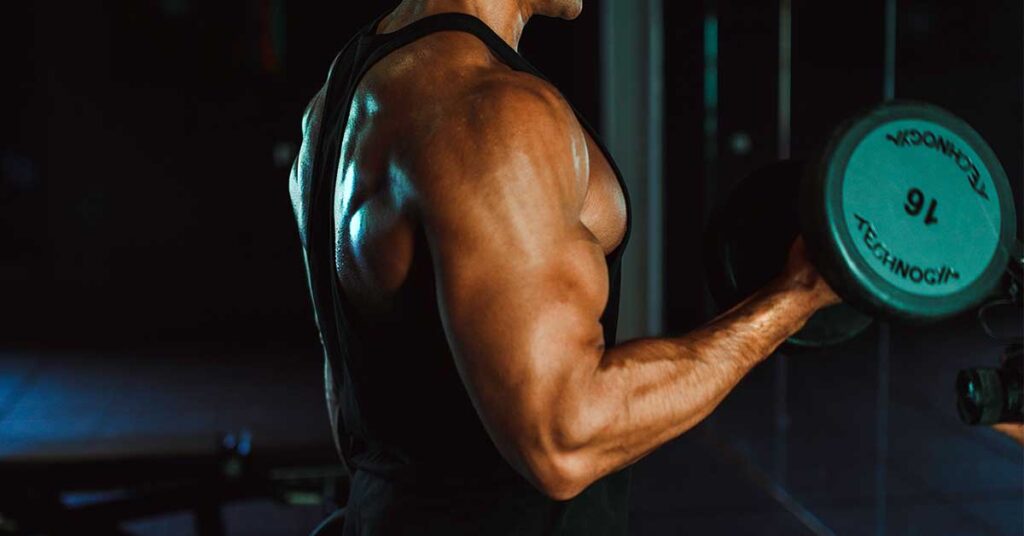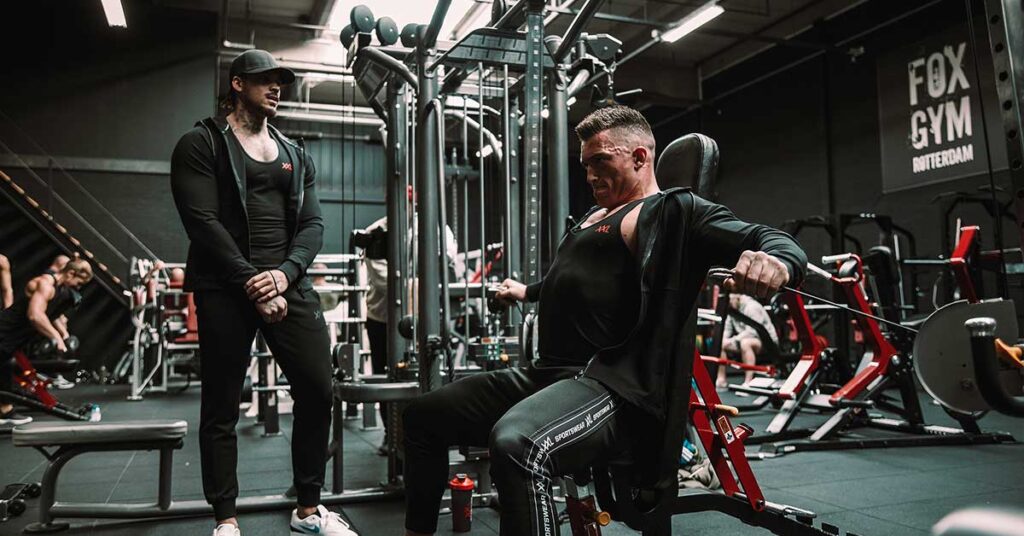
Training with cables or free weights; sometimes it seems like a political discussion that involves a lot of emotion. Some people swear by cables and really do everything here. Sometimes creativity is used to the extreme to be able to train a certain muscle group with cables.
Others, however, are only too happy to stay in the familiar ‘free-weights corner’. “They used to train like this and the physics used to be good, so free weights are better ”, the argument goes.
In this article I want to go through what the differences are (if any) and which considerations are important in your choice.
DIRECTION OF RESISTANCE
First of all, an important difference is the direction in which the resistance is pulling. When we want to train a muscle optimally, it is important that we position our body in such a way that the target muscle actually delivers the most work and can also work optimally.
For free weights, the direction of the resistance due to gravity is very simple, namely towards the ground. Obviously there are more forces that we have to take into account (this certainly applies to devices and cables). Take inertia (inertia) for example. Gravity, however, is the heaviest of all.
In principle, all muscles can be trained with free weights, but this requires some knowledge of functional anatomy and resistance profiles. With free weights, for example, it is impossible to train the triceps with 2 arms at the same time in full range of motion of all 3 heads. The dumbbell kickback is not a good exercise, period.
With cables, the direction of the resistance can be manipulated very well. This also allows you to train muscles in positions that are impossible with freeweights. It is also very easy to adjust exercises in such a way that you can shift the emphasis on which part of the range of motion is subject to the greatest load. Think of a metabolic block in which you want to work in the short position as much as possible, or a muscle damage block in which the long position may be desired.
MOVE FREELY WITH CABLES AND FREE WEIGHTS
Free weights and especially barbell exercises are less perfect than many people think. When a repetition has started, your hands are stuck on the bar and little or no movement is possible. You will be pushed in a straight path, which is certainly not always optimal. In addition, the path will have to be symmetrical for left and right, while hardly anyone is built symmetrically.
A bench press is a good example of this. When this is done too much and / or too heavily, it can lead to complaints.
This problem is much less common with dumbbells , as it is possible to move the arms individually from each other. However, some exercises remain suboptimal, as gravity still pulls straight down. Take a bicep curl: The dumbbell pulls straight down, but the arms often point slightly outward. For this reason, when exercising your biceps with dumbbells, it may be wiser to do this arm by arm.
Because cables can be set at different heights and you have a lot of influence over the direction in which the cable pulls with the distance to the cable, these problems are much less common with cables.

RESISTANCE PROFILE
Because gravity always pulls straight down with free weights, we have to influence the position of our body if we want to change a resistance profile of an exercise. Take, for example, a preacher curl with the upper arm in front of the body, or a seated incline bench curl with the upper arm hanging behind the body.
With cables, these kinds of adjustments are much easier to make, because throwing the cable up and down makes a lot of difference in the direction of pull. In addition, you can often tilt your body slightly to reach the desired angle.
MOMENTUM
Free weights give a lot of room to use momentum. This is not necessarily a bad thing and with some knowledge of the facts it can be used to your advantage. Let’s take a side raise as an example. Because gravity pulls straight down and muscles get weaker as they shorten, the side raise’s resistance profile doesn’t match the muscle’s force curve very much.
However, if you first perform a number of reps in this way, which are the heaviest in the short position, and then a few reps using momentum, we have a fairly complete resistance profile. Because of inertia, a weight does not want to change speed. This takes extra energy. When we make momentum with a side raise from below, more tension will now be needed at the bottom. Because we give the weight momentum, the exercise at the top becomes lighter.
What must be taken into account is that momentum happens in both directions; when extending the muscle with a squat or a bench press, this can be link.
Cables provide much less opportunity to create momentum and in addition, the eccentric trajectory with cables is lighter, because the pulley provides some resistance.
For this reason, cables can be beneficial for a metabolic workout, but less optimal for a damage workout.

CABLES VS FREE WEIGHTS IN SHORT
Due to the greater possibility of adjustment, cables offer more diversity than free weights. This can be advantageous for, for example, the range of motion and changing the resistance profile.
Free weights, especially barbells, may be less kind to the joints because they do not take into account structural differences between people and in the same person between left and right.
Free weights can make it easier to create momentum, which can be beneficial. In addition, some exercises, such as deadlifts or squats, with cables are difficult or impossible to match.
Finally, it can be difficult with cables to load muscles to the maximum due to a limited weight stack.
To make a long story short, neither of the two is the ‘best’. Both have their advantages and disadvantages and it is precisely in combination with each other that you get the most out of your training.


